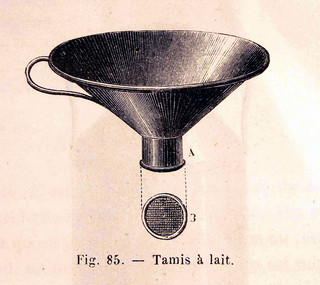 We have seen how triggered email, Big Data, the flattened marketing funnel and real-time marketing are revolutionizing the practice of email marketing. Although marketers must be able to identify and respond to opportunities in real time, not all sales can be closed immediately. To win business today, marketers must possess the tools and skills to operate in quick marketing cycles and long marketing cycles-and hybrids of both.
We have seen how triggered email, Big Data, the flattened marketing funnel and real-time marketing are revolutionizing the practice of email marketing. Although marketers must be able to identify and respond to opportunities in real time, not all sales can be closed immediately. To win business today, marketers must possess the tools and skills to operate in quick marketing cycles and long marketing cycles-and hybrids of both.
Large-ticket items and services typically have long sales cycles that involve cost justification, proposals, approvals, oversight, planning and bidding. These sales require nurturing-including providing information, education, value propositions, competitive advantages, demonstrations, webinars and more. For email marketers, the drip campaign will continue to be a key element for nurturing these types of leads.
Quick-hitting campaigns with short sales cycles tend to apply to less expensive products such as clothing, electronics, books, toys, food, toiletries and other household items. These items are more susceptible to quick decisions and impulse buying, and buyers can be influenced by discounts and special offers to act quickly. Amazon-type recommendations work well here.
Two different approaches and marketing infrastructures are required to address long-cycle and short-cycle marketing. After a prospect has been identified in real time-via a real-time social media inquiry, website visit, or whitepaper download, for example-long-cycle marketing procedures are applied for products that are appropriate for this approach.
Short-cycle sales also can be extended to lengthier engagements through follow-up series of messages for repeat sales, cross selling and upselling. With the right infrastructure in place, marketers also can make information sessions available in real time.
The Funnel Transformed
Long-sale cycles traditionally have been conducted through the classic marketing funnel. Doug Wheeler of Optify takes issue with the idea that the traditional marketing funnel is dead, pointing out that the AIDA formula for persuasive selling has been around for many decades and still applies:
- Attention: attract the attention of the customer
- Interest: create interest by communicating features, advantages and benefits
- Desire: arouse desire by convincing the prospect they need the product to solve a problem, and that the product will meet or exceed their needs and expectations
- Action: inspire prospect to act, ultimately purchase
However, whether you call the marketing funnel flattened, dented or deformed, it certainly has been transformed by the emergence of new channels and methods in which marketing operates. The Internet has added new modes of information discovery and communication, which has given rise to new tools, techniques and challenges to the marketing process.
While the psychological aspects of marketing remain the same (providing solutions to pain points, playing on fears and desires, etc.), the channels, mediums and immediacy in which marketers now must operate have added new dimensions and complexities to the game.
Marketers today must be able to address multiple digital touch points that include corporate websites, affiliates, social media, email and mobile devices. Big Data also has entered the picture, requiring new tools and techniques to mine it. Real-time marketing and triggered personalized responses also require new skills and tool sets.
Studies show that multichannel integrated campaigns achieve the greatest success rates-which means conducting unified campaigns that include email, social media, direct mail, phone and advertising. As Marketo reports, “Today’s buyer seeks relevant and personalized content across all digital channels: email, mobile, social, display advertising, you name it. Omni-channel, customer-focused marketing is no longer nice to have; it’s a must-have.”
Big Data Bends the Funnel
What has altered the marketing funnel is the plethora of online venues in which prospects are conducting research and making their interests known. Leads can be identified through tools that monitor this sea of information, called Big Data, and mine it. Big Data also can be harvested for background information for customer profiles and buyer personas.
The long and short of it is that marketers are being pressed to master new tools and techniques to conduct real-time marketing in seas of Big Data-including triggered email, buyer profiling, social media monitoring and mobile marketing. Depending on the nature of your product or service, either long- or short cycle marketing can kick in after real-time discovery.
However, while this is the direction in which marketing is moving, studies show that a majority of marketers lack the skills to conduct these types of leading-edge campaigns, including the ability to monitor Big Data, detect prospects in real-time and trigger responses that are personalized.
Data Quality Remains Essential
As email marketing undergoes these changes, one thing that remains constant is the importance of data quality. Data hygiene and appending techniques also are advancing, such as more powerful real-time verification and demographic appending services.
Those email marketers who put all the pieces together-real-time marketing, Big Data mining, triggered email, mobile marketing and multichannel integration-while maintaining the highest standards of deliverability and data quality through rigorous data hygiene regimens, will reap the highest rewards.
Need help improving the standards of your email deliverability? Check out “Email Deliverability: 21 Steps to Success” today!
Photo Credit: El Bibliomata
{{cta(‘c117dce8-f55d-4a7c-b03b-2e8854439c7e’)}}
 Affiliate Marketing
Affiliate Marketing Automotive
Automotive eCommerce and Retail
eCommerce and Retail FinTech
FinTech LeadGen
LeadGen Nonprofit and Political
Nonprofit and Political Payments
Payments Technology Platforms
Technology Platforms Tourism and Hospitality
Tourism and Hospitality
 We have seen how
We have seen how 